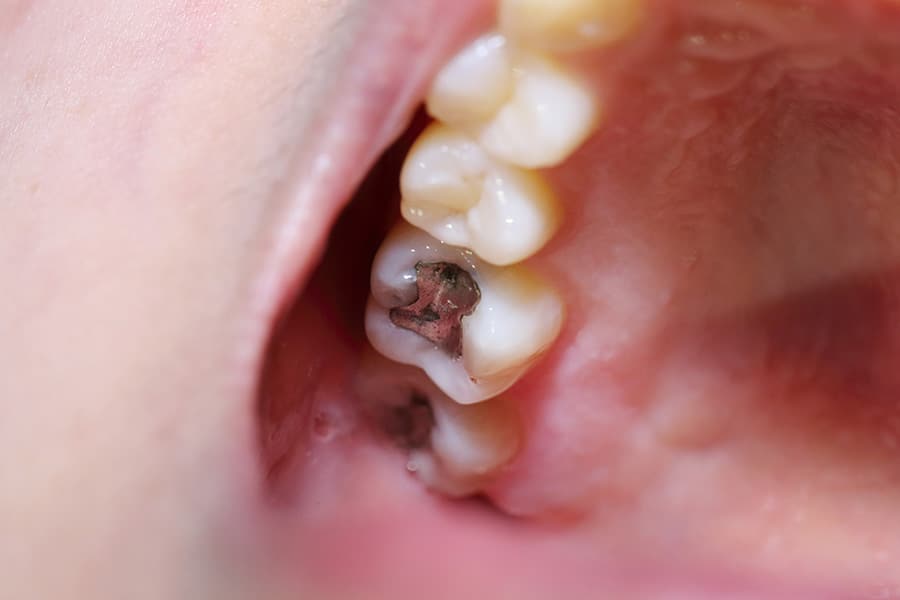There are many different types of cavities, each type determines how long does a cavity filling takes. Larger cavities will take more time to correct than smaller cavities. The amount of time you should expect your filling to take will depend on the size and location of the tooth decay.
Generally speaking, cavity fillings can take anywhere from 20 minutes to an hour. Read on to learn what cavities are and how to correct them.
What Are Cavities and What Causes Them?
Cavities are damaged and decaying areas of a tooth. They are caused by bacteria eating through the enamel of a tooth to create holes or indentations.
Cavity-causing bacteria need sugar to metabolize. As a result, consuming foods high in sugar and not properly cleaning your teeth after eating can increase your risk of developing cavities.
Even with proper oral hygiene, cavities are a relatively common experience. The best way to avoid a dental cavity is by practicing good oral health and getting regular dental checkups.
How Long Does a Cavity Filling Take?
You should expect a cavity filling to take somewhere under an hour. The exact time the procedure will take will depend on what type of filling you’ll be getting and the size of the capability. Multiple fillings will also increase the length of the procedure.
Size of the Tooth Filling
One of the factors that will affect how long does a cavity filling takes is the size. The larger the cavity is, the larger the filling will need to be. This means more time removing the decaying areas of the tooth and more time adding the filling material.
Number of Surfaces of a Cavity Filling
There may be multiple surfaces of a dental cavity. This means that the cavity affects multiple areas. In this case, the dentist will need more time to properly restore your teeth. A multiple-surface cavity will take at least 30-40 minutes. A single surface filling can take less time.
The Filling Procedure: What to Expect
It can be daunting to get a filling, especially if this is your first time undergoing the procedure. However, dental fillings are a common dental procedure and are very safe. During the procedure, a dentist will begin by inspecting the affected tooth. Then, they’ll likely give you a local anesthetic to numb the tooth.
Once the anesthetic is in effect, the dentist will remove the decay around the tooth and replace it with the filling material. Depending on the filling material, it may need to set or be cured. Finally, your dentist will check that your new filling doesn’t affect your bite.
After the Filling: What to Expect
You may feel extra sore or sensitive in the area where you received the filling. These feelings should subside after a few days.
What Are the Different Types of Fillings?
The type of filling depends on what material is used to replace the decaying area of the dental cavity. There are several different filling options, but here are the most common types:
Composite fillings are made from a composite resin and will match the color of your tooth.
Silver amalgam fillings are made from a combination of metals. These fillings will appear silver.
Gold fillings are a mix of gold and copper and appear gold. They are the most durable type of filling.
Porcelain fillings are made from porcelain. They are made to match the color of your tooth.
How Long Will My Filling Last?
The life span of a filling depends on the material. Most dental fillings will last between 5 to 15 years. More durable types of tooth fillings, such as gold, can last up to 20 years.
Don’t Delay Getting a Cavity Filled
If you suspect you may need a filling, it’s important to get your cavity filled as soon as possible to prevent further decay. Letting the cavity continue to decay can cause the affected area to spread to your tooth’s nerve. In this case, a root canal will likely become necessary.
Do You Need a Cavity Filling?
Need a tooth cavity filling? Give us a call at 480-838-3033 to schedule your appointment.

